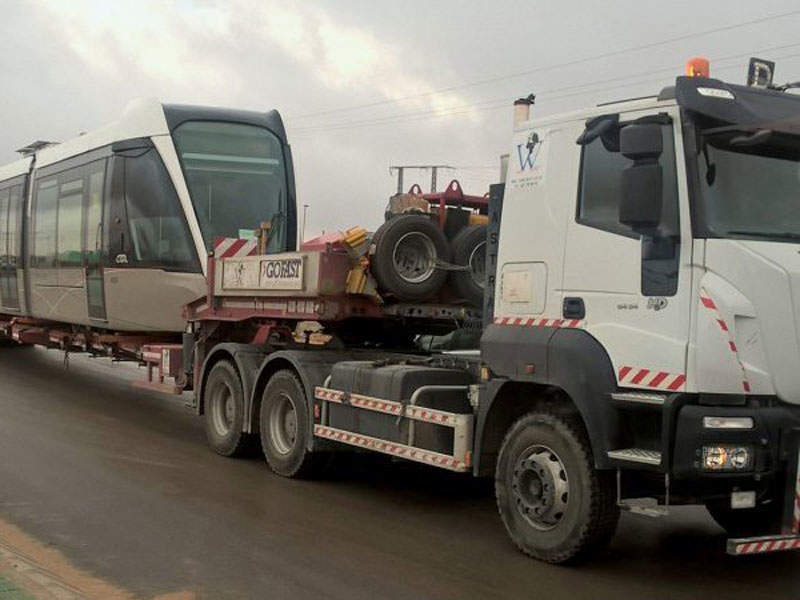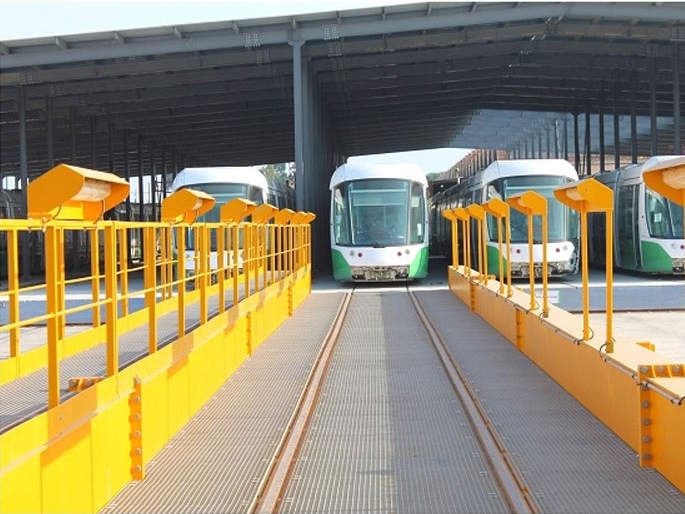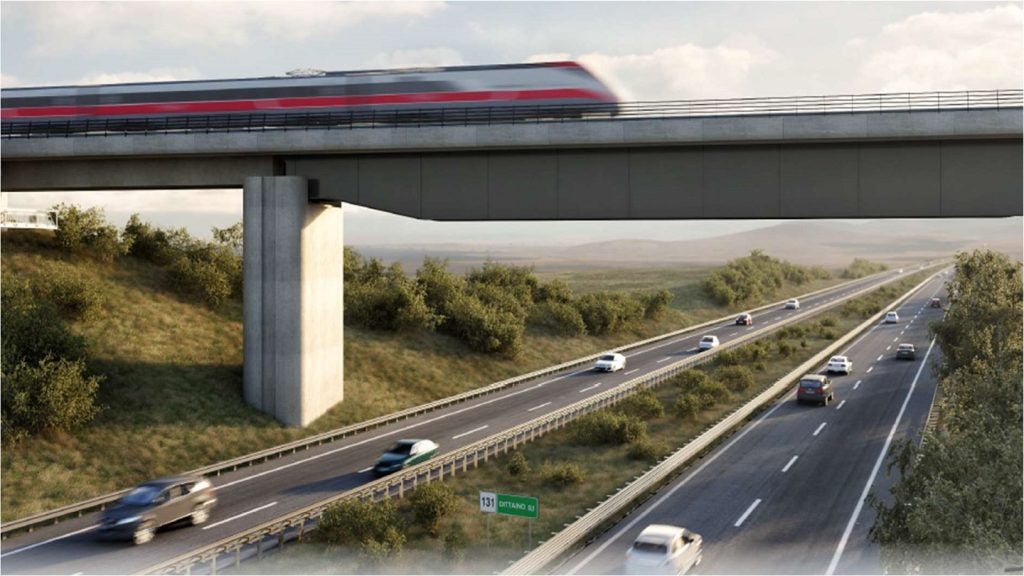Ouargla Tramway, constructed in the city of Ouargla in Algeria, is a 9.6km-long tramway that connects the old town of El Ksar with the new town of Hai Nasr through downtown Ouargla. The tramway opened in March 2018, operated by Enterprise Métro d’Alger (EMA).
The new tramway passes through major interchange points to connect passengers with other modes of transport, including the Ouargla bus station and SNTF railway station,.
The line enables the transportation of 3,450 passengers an hour in each direction. The average annual ridership on the line is expected to be up to 34 million passengers.
Ouargla Tramway project details
The Algerian Ministry of Transport unveiled its plans to build the Ouargla Tramway in 2011. Detailed studies for the alignment, track, earthworks and hydraulic structures began in the same year.
The alignment of the Ouargla Tramway includes 16 new stations. The route originates at Hai Nasr and terminates at Sid Rouhou station, linking the city centre with the university campus.
Other new constructions include a maintenance and depot centre, a central command station and an administrative building. Telecommunications and electricity networks along the route were also upgraded as part of the project.
Construction
Construction on the Ouargla tramway began with an official launch ceremony in July 2013. Works reached the final phase by the end of 2016.
Testing and commissioning activities started in late 2017 and the tramway was opened for passengers in March 2018.
Rolling stock for Ouargla Tramway
The Ouargla tramway is served by a fleet of 23 Citadis 402 trams. The first train-set was delivered at the maintenance centre for the new Ouargla network in December 2016. Each tram operates at average speeds of 20.6km/h and navigates the distance between origin and destination in 34 minutes.
The tram was designed by Alstom’s Design & Styling department. The design mirrors the image of the city of Ouargla. The external paint scheme resembles the colours of the sun and the desert, while the green interior is similar to the palm groves.
Measuring 44m-long and up to 2.65m-wide, each tram is capable of carrying more than 400 passengers. The vehicle incorporates significant technical modifications to its traction and braking systems to withstand the desert climate of Ouargla.
The tram can operate in temperatures up to 49°C and survive severe solar radiation, as well as large amounts of dust and sand particles in the air. Powerful air conditioning and windows covered by a solar protection film ensure high levels of comfort for passengers.
Contractors involved
SYSTRA was awarded the full project management contract for the Ouargla tramway project in 2011. Under the contract, the company was responsible for detailed design and preparation of tender documents and assistance for the bidding process, management of contract delivery, verification and approval of constructional designs and monitoring the construction.
The Algerian Ministry of Transport placed a €228m ($240m) contract with a consortium comprising Rover Alcisa, Elecnor and Assignia Infrestructuras for the construction of the Ouargla tramway in June 2013.
Cital, a joint venture of Ferrovial, EMA and Alstom, was awarded a contract to deliver 23 Citadis 402 trams for the Ouargla tramway in December 2014.
Alstom was responsible for delivering electrical equipment, traction substations, communication and signalling systems, operational support, maintenance equipment and ticketing systems.
TIE was awarded a subcontract to install electrical equipment in the stations and lay a cable line for the Ouargla tramway in January 2016.










